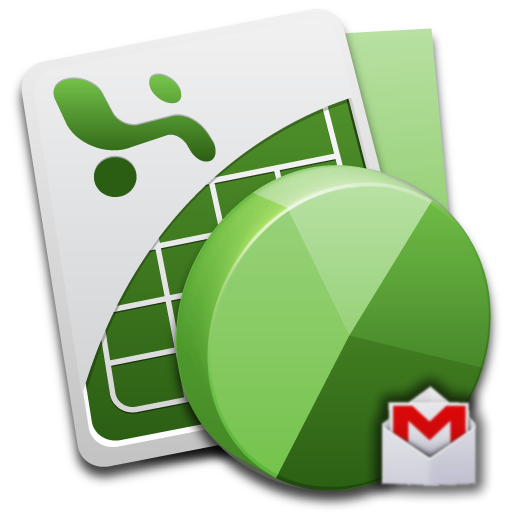Implement a Graph from ASCII Data to Chart Windows Form Control using VB.NET
The example below is a simple way on how to Plot a Graph in Chart Windows Form Control using VB.Net.
Requirements:
1. Microsoft Visual Studio (In my case, I'm using Visual Studio 2010 Express Edition).
To Begin with:
1. Start your Microsoft Visual Basic 2010 Express.
2. In the New Project window, Choose "Windows Form Application" and name it to whatever you like or something like "Plot Graph" then Click "OK".
3. You must now be able to see the Form. On the toolbox Add the following controls onto the form and update its properties.
a. Form: Name:=frmGraph
b. (1) Chart: Name:=Chart1
c. (1) Textbox: Name:=txtData, Multiline:=True, Text:=30;52;57;57;68;93;129;173;209;232;240;232;217;196;169;141;116;98;86;80;78;76;76;79;81;83;86;91;95;97;95;93;95;99;103;105;106;107;110;116;120;122;123;124;127;132;137;139;137;136;132;126;124;122;117;113;110;105;97
d. (1) Button: Name:=btnPlot, Text:=&Plot
*Then arrange and re-size the controls as you can see below. But you can still orient it to whatever you want.
4. Now Press F7 to view the code editor window.
Code Blocks:
:namespace - We need to declare the namespace containing the methods and properties of the Chart Windows Form Control in order to use its properties and methods.
:frmGraph_Load() - When the form is loaded we do not want to see the Gridlines behind the plot so we'll disable it by setting the MajorGrid Property of the ChartAreas X and Y Axis Enabled to False and set it background to transparent.
:btnPlot_Click() - When the Plot button is clicked, we declare an Array and 2 collections of series values.
CD = An array collection that holds the data we split from the data Textbox.
s1 = Is our first series collection
s2 = is our second series collection (Both have the same values since we only need to plot the Points and a Line.
Full Code:
5. Finally, build and run the project.
Requirements:
1. Microsoft Visual Studio (In my case, I'm using Visual Studio 2010 Express Edition).
To Begin with:
1. Start your Microsoft Visual Basic 2010 Express.
2. In the New Project window, Choose "Windows Form Application" and name it to whatever you like or something like "Plot Graph" then Click "OK".
3. You must now be able to see the Form. On the toolbox Add the following controls onto the form and update its properties.
a. Form: Name:=frmGraph
b. (1) Chart: Name:=Chart1
c. (1) Textbox: Name:=txtData, Multiline:=True, Text:=30;52;57;57;68;93;129;173;209;232;240;232;217;196;169;141;116;98;86;80;78;76;76;79;81;83;86;91;95;97;95;93;95;99;103;105;106;107;110;116;120;122;123;124;127;132;137;139;137;136;132;126;124;122;117;113;110;105;97
d. (1) Button: Name:=btnPlot, Text:=&Plot
*Then arrange and re-size the controls as you can see below. But you can still orient it to whatever you want.
4. Now Press F7 to view the code editor window.
Code Blocks:
:namespace - We need to declare the namespace containing the methods and properties of the Chart Windows Form Control in order to use its properties and methods.
Imports System.Windows.Forms.DataVisualization.Charting
:frmGraph_Load() - When the form is loaded we do not want to see the Gridlines behind the plot so we'll disable it by setting the MajorGrid Property of the ChartAreas X and Y Axis Enabled to False and set it background to transparent.
Private Sub frmGraph_Load(ByVal sender As System.Object, ByVal e As System.EventArgs) Handles MyBase.Load
With Chart1.ChartAreas(0)
.AxisX.MajorGrid.Enabled = False
.AxisY.MajorGrid.Enabled = False
.AxisX.MajorGrid.LineColor = Color.Coral
.AxisY.MajorGrid.LineColor = Color.Coral
.BackColor = Color.Transparent
End With
End Sub
:btnPlot_Click() - When the Plot button is clicked, we declare an Array and 2 collections of series values.
CD = An array collection that holds the data we split from the data Textbox.
s1 = Is our first series collection
s2 = is our second series collection (Both have the same values since we only need to plot the Points and a Line.
Private Sub btnPlot_Click(ByVal sender As System.Object, ByVal e As System.EventArgs) Handles btnPlot.Click
Dim CD As Array
Dim s1 As New Series
Dim s2 As New Series
Dim xLab As Long
'GET data from the textbox
CD = Split(txtData.Text, ";", -1)
Chart1.Series.Clear()
s1.Name = "Series 1"
s1.ChartType = SeriesChartType.FastPoint
s2.Name = "Series 2"
s2.ChartType = SeriesChartType.FastLine
xLab = 1
'loop through each array and set series values
For Each d In CD
s1.Points.AddXY(xLab, d)
s2.Points.AddXY(xLab, d)
xLab = xLab + 1
Next
'Add update the chart with the series values
Chart1.Series.Add(s1)
Chart1.Series.Add(s2)
End Sub
Full Code:
Imports System.Windows.Forms.DataVisualization.Charting
Public Class frmGraph
Private Sub frmGraph_Load(ByVal sender As System.Object, ByVal e As System.EventArgs) Handles MyBase.Load
With Chart1.ChartAreas(0)
.AxisX.MajorGrid.Enabled = False
.AxisY.MajorGrid.Enabled = False
.AxisX.MajorGrid.LineColor = Color.Coral
.AxisY.MajorGrid.LineColor = Color.Coral
.BackColor = Color.Transparent
End With
End Sub
Private Sub btnPlot_Click(ByVal sender As System.Object, ByVal e As System.EventArgs) Handles btnPlot.Click
Dim CD As Array
Dim s1 As New Series
Dim s2 As New Series
Dim xLab As Long
'GET data from the textbox
CD = Split(txtData.Text, ";", -1)
Chart1.Series.Clear()
s1.Name = "Series 1"
s1.ChartType = SeriesChartType.FastPoint
s2.Name = "Series 2"
s2.ChartType = SeriesChartType.FastLine
xLab = 1
'loop through each array and set series values
For Each d In CD
s1.Points.AddXY(xLab, d)
s2.Points.AddXY(xLab, d)
xLab = xLab + 1
Next
'Add update the chart with the series values
Chart1.Series.Add(s1)
Chart1.Series.Add(s2)
End Sub
End Class
5. Finally, build and run the project.




Comments
Post a Comment